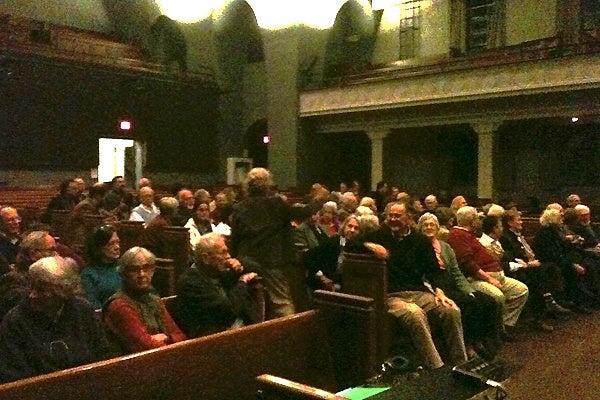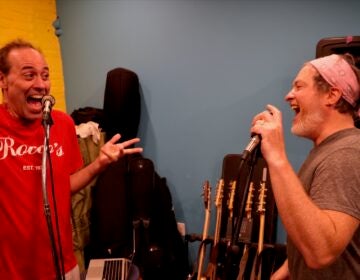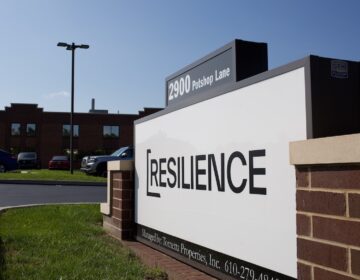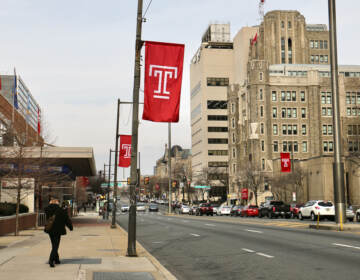Mt. Airy native plays role in new National Civil War monument
For an author, publishing a book is a bit like shooting an arrow into the air – the writer doesn’t know how it will be received or what impact it will have. Adam Goodheart, a journalist and historian who visited his alma mater Germantown Friends School in early November, certainly did not imagine that the publication of his book 1861: The Civil War Awakening would contribute to creation of a national Civil War monument.
But it did. Goodheart was invited to the White House on Nov 1. to witness President Obama designate Fort Monroe, a recently decommissioned army installation at the mouth of the James River in Virginia, as the latest national monument. At the Oval Office ceremony, Goodheart said he was told that his book had played an important role in the government’s decision to protect the fort. “That was enormously gratifying and exciting,” said Goodheart.
Goodheart grew up in Mt. Airy
On Tuesday evening, November 8, Goodheart, who graduated from GFS in 1988, talked about Fort Monroe significance, which he covered in detail in his book 1861: The Civil War Awakening. Over 100 of Goodheart’s former teachers, their families and friends were on hand. For Goodheart, who grew up in Mt. Airy, it was like a homecoming. He said, “So many familiar faces – I think just about every history teacher I had is here.”
Goodheart takes something of an unconventional approach in 1861: The Civil War Awakening, which focuses on the last months of 1860 and the first months of its title year. It examines the passions that were being aroused by focusing on a number of areas both famous and obscure. Among the famous were the bombardment of Ft. Sumter, which included a Germantown native, Charles Bringhurst, among the garrison. Among the obscure were the “Wide Awake” pro-Union young people’s movement that spontaneously spread across the North in 1860, and the actions of Jessie Benton Fremont, wife of explorer and first Republican presidential candidate John C. Fremont, to help keep California in the Union camp as the war loomed.
Showdown over slavery at Fort Monroe
The events at Fort Monroe, then called Fortress Monroe, is one area that 1861 examines in depth. Fortress Monroe was held by the Union after the secession of Virginia; it was something of an island in a surrounding Confederate sea. The commander of the fort was General Benjamin Butler, a cantankerous Massachusetts lawyer and politician whom Goodheart called “rather an ogre-ish figure.” But, he went on to say, “This is a guy who was loathed and reviled but he’s one of the heroes of my book.”
At Fortress Monroe, said Goodheart, “Butler was immediately confronted with a problem – three escaped slaves who had made their way there. His dilemma was that Lincoln had made it clear that he was not about to interfere with slavery where it existed. But Butler was not about to send them back to help his enemies. “
The owner of the slaves went to the fortress to demand that they be returned. Goodheart described Butler’s response as “You Southerners insist on treating these people as property, so I’m going to treat them as property.” Butler dubbed the escapees “contraband of war” – property legally confiscated from the enemy in time of war. They would not be sent back.
As the word spread, the first three escapees to Fortress Monroe were joined by seven more the next day, then 45, then hundreds more who sought sanctuary and freedom there. “This opened the floodgates for emancipation,” said Goodheart.
Q&A on 1861
When asked if his book was an attempt to explain the causes that the citizens of the North fought for, why they were willing to fight, suffer and die for the cause of the Union, Goodheart said, “I think it is. It was also a Northern revolution. In some ways the war was provoked by the North. They were bent on preserving the Union on certain terms and had elected an anti-slavery president, a Union that wouldn’t continue to make what it regards as shameful compromises with what they called the ‘slave power.’ “
When asked what common misconceptions are entertained today about the Civil War, Goodheart replied, “One of the great misconceptions is that the South was the romantic underdog, crushed by a soulless machine. In many respects the North was the underdog. Ever since the Constitutional Convention the South had had a chokehold on national politics. And there actually was an enormous amount of idealism in the North.”
The impetus that led to the writing of the book lay in a trip that Goodheart, who is director of Washington College’s C.V. Starr Center for the Study of the American Experience in Maryland, made with some of his students to a former Maryland plantation that was home to 13 generations of one family. One of his students had an ancestor who fought in the war but who had apparently been torn by doubts as to which side to choose. The details had long been forgotten and the student, himself a veteran, was in search of insight as to what they might have been.
At the plantation they found masses of family documents, including letters from 1861 from a major in the U.S. Army who had been wrestling with that very subject. “I had to tell Jim [the student] that it isn’t always this easy!” joked Goodheart to the audience.
The officer who wrote the letters considered himself a Southerner but decided to support the Union. The decision that he had to make, Goodheart said, was just one example of those that were made in “millions of individual hearts and minds” as the country moved toward war.
When asked what he would like readers to garner from his book, Goodheart said, “You never know what people are going to come away with when they read your work. But two things are the centrality of slavery to the conflict, and the institutional cruelty that it inflicted on the country.”
WHYY is your source for fact-based, in-depth journalism and information. As a nonprofit organization, we rely on financial support from readers like you. Please give today.










